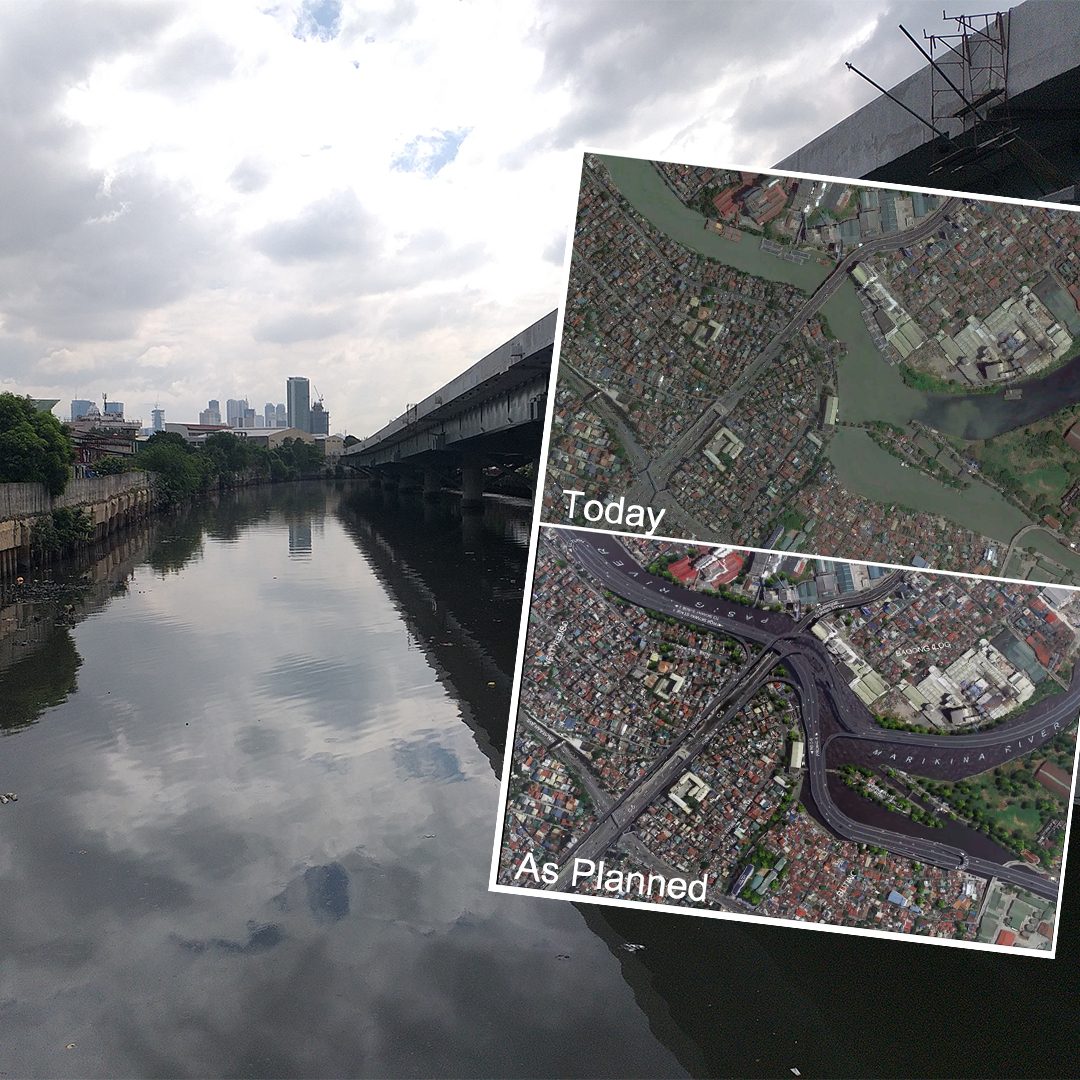SUMMARY
This is AI generated summarization, which may have errors. For context, always refer to the full article.

Various groups slammed the proposed Pasig River Expressway (PAREX) project by San Miguel Corporation (SMC) in an online public consultation on Wednesday, July 14, for supposedly prioritizing cars over people’s welfare.
As part of the requirements for the project’s environmental permits, SMC presented to the public its plans to build a P95.4-billion expressway on top of the Pasig River that would connect Manila to Pasig. SMC president Ramon S. Ang claimed that PAREX is a “solution within a solution” that would solve Metro Manila traffic and clean up Pasig River.
However, various groups and individuals disagreed, saying that PAREX would only negatively impact public mobility, heritage, environment, and public health.
For Move As One Coalition, a group of mobility advocates, creating expressways will make traffic congestion worse as it will only encourage people to drive private motor vehicles instead of taking public transportation.
This phenomenon, which urban experts called induced demand, only fills newly-built expressways with more cars, making it a poor option for mobility.
This is especially true as users of the SMC-operated Skyway Stage 3 and nearby roads have reported heavy traffic after only a year of operation. SMC representatives eventually admitted during the consultation that PAREX will only increase traffic in service areas.
Irreversible impact
Aside from these concerns, heritage group Renacimiento Manila explained that there are many heritage bridges crossing the river, including the Jones Bridge and Quezon Bridge near Intramuros. To accommodate the high arches of these bridges, the expressway will be built higher, “photobombing” Intramuros, the Manila Central Post Office, and other heritage buildings from Manila to Pasig.
The group is also concerned that structures on the banks of the river might also be demolished to build access roads, on-ramps, and off-ramps for the expressway.
“Without the Pasig River, there would be no Manila today,” International Council on Monuments and Sites (ICOMOS) Philippines trustee Erik Akpedonu added.
Move As One Coalition convenor Robert A. Siy, Jr. also warned that the expressway would be a “region-wide photobomb” of various heritage sites. This is because the first phase of the project from Intramuros to Plaza Dilao will have ramps near Anda Circle and Fort Santiago in Intramuros, a national historical landmark.
“Pasig River is the cradle of civilization of our nation’s capital,” Siy emphasized in the consultation.
The transport coalition also stressed that building more expressways will worsen air pollution in the metro and negatively impact public health because of the increased production of harmful greenhouse gases (GHG) and toxic air pollutants brought about by car usage.
Policy researcher Ken Abante, who is also part of the Move As One coalition, said that the project itself “is a problem, not a solution” that makes the revival of the Pasig River impossible due to irreversible impacts of the proposed project.
International climate action consultant Bea Dolores explained that the expressway could affect the chemical balance and water quality of the Pasig River.
She added that PAREX could block the sunlight, preventing the growth of good bacteria that helps remove the unpleasant smell and murkiness of the river.
PAREX would also occupy a wide span of both Pasig and Marikina rivers, which can potentially impede the flow of water from Laguna de Bay to Manila Bay.
Dolores further emphasized that these waterways serve ‘just like the veins of our body,’ circulating floodwaters around Metro Manila’s vast network of rivers and canals.
Push for better projects
As part of the project, SMC entered into a memorandum of agreement (MOA) for the Pasig River Dredging Project with the Department of Environment and Natural Resources (DENR). The company claimed the project was part of their environmental initiatives to revive the Pasig River but groups disagreed and alleged that PAREX was a profit-driven project.
“The cost of building PAREX, an estimated ₱81.5 billion, [will] be put to better use by investing in programs that will clean and revitalize the river and give people smarter and greener choices that will reduce their transport-related carbon footprint and promote more active lifestyles,” Move As One coalition said in a statement.
Instead, they urged the government to implement sustainable alternatives that will enhance public mobility, such as biking infrastructure, expanded public transportation, and green parks..
They also recommended the enhancement of public transportation modes, especially rail systems and bus rapid transit (BRT). Among the projects suggested is the development of MRT Line 4, a proposed rail line that will also serve the east-west corridor from Taytay to Sta. Mesa, Manila.
According to the coalition, safe pedestrian pathways, protected bike lanes, and parks along the river to make the city safer must also be created for commuters.
Iloilo Esplanade, which was used as a model for converting roadways into linear parks with bike paths, is now a popular area for bikers, joggers, tourists, and locals seeking some breathing space in the busy city.
“It is high time that we shift away from the outdated car-centric transportation policies of the last century and instead embrace inclusive, people-centered, and sustainable approaches that are now being adopted as best practice all over the world,” Sy said.
PAREX is still subject to approval of relevant government bodies, including the DENR and the National Economic and Development Authority. – Joven Jacolbia/Rappler.com
Joven Jacolbia is a Rappler volunteer studying organizational communication at the University of the Philippines Manila (UPM). He serves as editor-in-chief of Assortedge Media and Research and Education Head of Bahagsari UPM.
Add a comment
How does this make you feel?





![[Rappler Investigates] What’s it all about, Alice?](https://www.rappler.com/tachyon/2024/05/alice-guo-newsletter-may-30-2024.jpg?resize=257%2C257&crop=292px%2C0px%2C720px%2C720px)



![[Be The Good] PAREX and the power of communities](https://www.rappler.com/tachyon/2024/03/parex-protest-newsletter-mar-21-2024.jpg?resize=257%2C257&crop=275px%2C0px%2C720px%2C720px)
There are no comments yet. Add your comment to start the conversation.